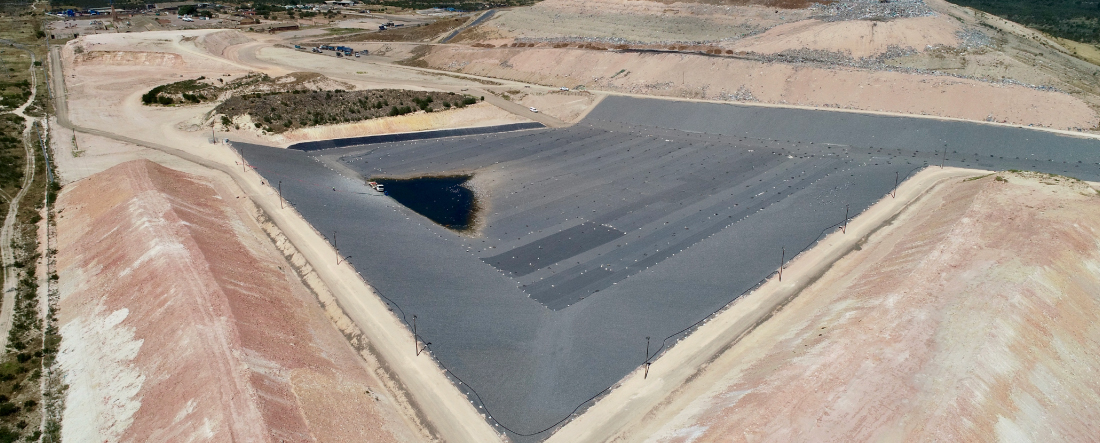- All Categories
- Africa
- South Africa
- Environmental
- All Years
- 2025
- 2024
- 2023
- 2022
- 2021
- 2020
- 2019

2025 / 05 / 12 by EnviroServ
With more and more waste generated due to growing and evolving economies, engineering in waste management is not just a supporting function — it is the cornerstone of environmental protection, operational safety, and long-term sustainability.
EnviroServ , a SUEZ company, maintain that engineering impacts every area of waste management and that it plays an important role in their compliance. “The integrity of a green landfill system requires precise design and engineering, not only to protect the environment but also to ensure compliance,” says Nico Vermeulen, Operations Director at EnviroServ.
EnviroServ takes this responsibility seriously, ensuring that, when designing their waste management facilities, every aspect of the design and operation is underpinned by solid, science-based engineering principles.
“It’s not just about protecting the environment,” says Vermeulen. “You’re managing complex interactions between materials — from HDPE liners and clay to leachate chemistry and stability factors. If these aren’t carefully calculated and executed, you risk system failure, environmental contamination, and long-term liability.”
Liner Systems: The Foundation of Environmental Protection:
A waste management facility or green landfill’s liner system is its first line of defence against groundwater contamination. Proper design ensures that HDPE liners, clay layers, and drainage systems interact correctly. An essential part of this is preventing indentations or damage to liners from overlying stone, which can lead to cracks over time. Structural stability must also be ensured to avoid future landfill slope failures, particularly at smooth slip interfaces like those between plastic liners and clay.
“Compatibility is critical,” Vermeulen explains. “You can’t use just any material - the materials used must be resistant to chemical attack and be physically robust enough to last decades.”
Beyond material selection, landfill stability must be considered. Smooth surfaces, like HDPE, can create potential slip planes where waste may shift — particularly under heavy rainfall or poor compaction. This requires stability modeling to ensure safe long-term performance.
“You want to design the liner system so that if any movement occurs, it happens in a controlled and predictable layer — not through your clay or core containment structures,” says Vermeulen. “It’s about creating engineered resilience.”
Drainage Design: Managing Water Effectively:
Effective leachate and stormwater drainage is another critical engineering challenge. Drainage systems must be correctly sloped and sized to ensure the uninterrupted flow of leachate, with built-in redundancy for system resilience.
In parallel, surface water management is essential to prevent clean rainwater from mixing with waste. The goal, Vermeulen explains, is to keep clean water clean — by diverting it away from active waste zones and capturing only what is necessary.
“Rainwater that falls directly onto waste becomes leachate — a highly contaminated by-product that’s difficult and costly to manage,” he notes. “We aim to minimise this by ensuring efficient runoff and containment systems, including contaminated stormwater dams. Water can be reused for dust suppression and other on-site needs.”
Moreover, engineering in waste management extends to managing rainwater, groundwater, and surface water. Clean water must be kept uncontaminated through diversion and containment strategies.
Gas Capture and Flaring: Engineering for Sustainability:
Landfill gas is both a challenge and an opportunity. If unmanaged, methane emissions pose a serious greenhouse gas threat. However, with the right gas extraction systems in place — including flaring — landfill gas can be captured and destroyed safely.
“Installing flare systems is part of being a responsible operator,” says Vermeulen. “But it’s not just about putting a pipe in the ground. You need proper spacing of wells, correct sealing, and pipe slopes that avoid condensation build-up, which can block flows.”
System balance is essential. Over-extraction can dilute gas quality, while under-extraction allows methane to escape. Continuous monitoring ensures that the volume extracted matches the methane being generated.
“You want a constant, stable supply of gas that can be properly combusted at high temperatures, ensuring full destruction of harmful components,” Vermeulen adds. Gas management systems, including flares, must be properly engineered to optimise gas capture and destruction.
Engineering for People and the Future:
Beyond environmental protection, engineering must also safeguard people. This means designing site layouts that protect workers, and other stakeholders from exposure, heat, and other risks, and maintaining high safety standards.
“I take my hat off to employees who work at the sites on a daily basis,” Vermeulen says. “As engineers and leaders though, it’s our job to ensure those conditions are managed as safely and responsibly as possible.”
Conclusion:
From liner design and material compatibility to stormwater diversion and landfill gas management, modern landfill engineering is a complex discipline that requires precision, foresight, and a deep understanding of environmental science. At EnviroServ, engineering is not just a function — it’s a commitment to doing things right, for the environment, for communities, and for the future of sustainable waste management.
Get a quote